Best ukuleles 2025: Top acoustic ukes and the best electric ukuleles for all
Start strumming today with our expert guide to the best ukuleles available today, with options from Martin to Mahalo

1. Quick list
2. Best overall
3. Best budget uke
4. Best for live
5. Best for tone
6. Best all-rounder
7. Best for kids
8. Best for Strat fans
9. Best fret access
10. Best gateway uke
11. Buying advice
12. How we choose products
From your first-ever music lessons at school to laying down parts in a studio, the best ukuleles are wonderful instruments to have in your arsenal. Not only are they fun and easy to get the hang of, but there’s a surprising amount of depth to them and a wide range of playing dynamics once you dive deeper.
The ukulele is great for so many reasons. They’re lightweight and portable, which makes them perfect for kids and for adults that want a less intimidating entry into the world of musical instruments. It’s far less daunting than sitting at a full-size piano or picking up an electric guitar. Armed with just a chord book, or a very quick YouTube search, you can easily tune up and get on your way, putting a few chords together and learning entire songs in no time.
When played well, the ukulele is a fantastic-sounding instrument in its own right. Of course, you can instantly summon summery, Hawaiian vibes with just a few strums, but a uke can also be great for layering acoustic guitar tracks with. It can provide another sonic texture and help widen the stereo image of a recording.
The ukulele has found its way into popular music via many talented players; from George Harrison to Billie Eilish so if you’re buying for the first time then we’d recommend checking out our buying advice section. It features loads of useful info from the experienced writing team here at MusicRadar and will answer any burning questions you might have.
Quick list
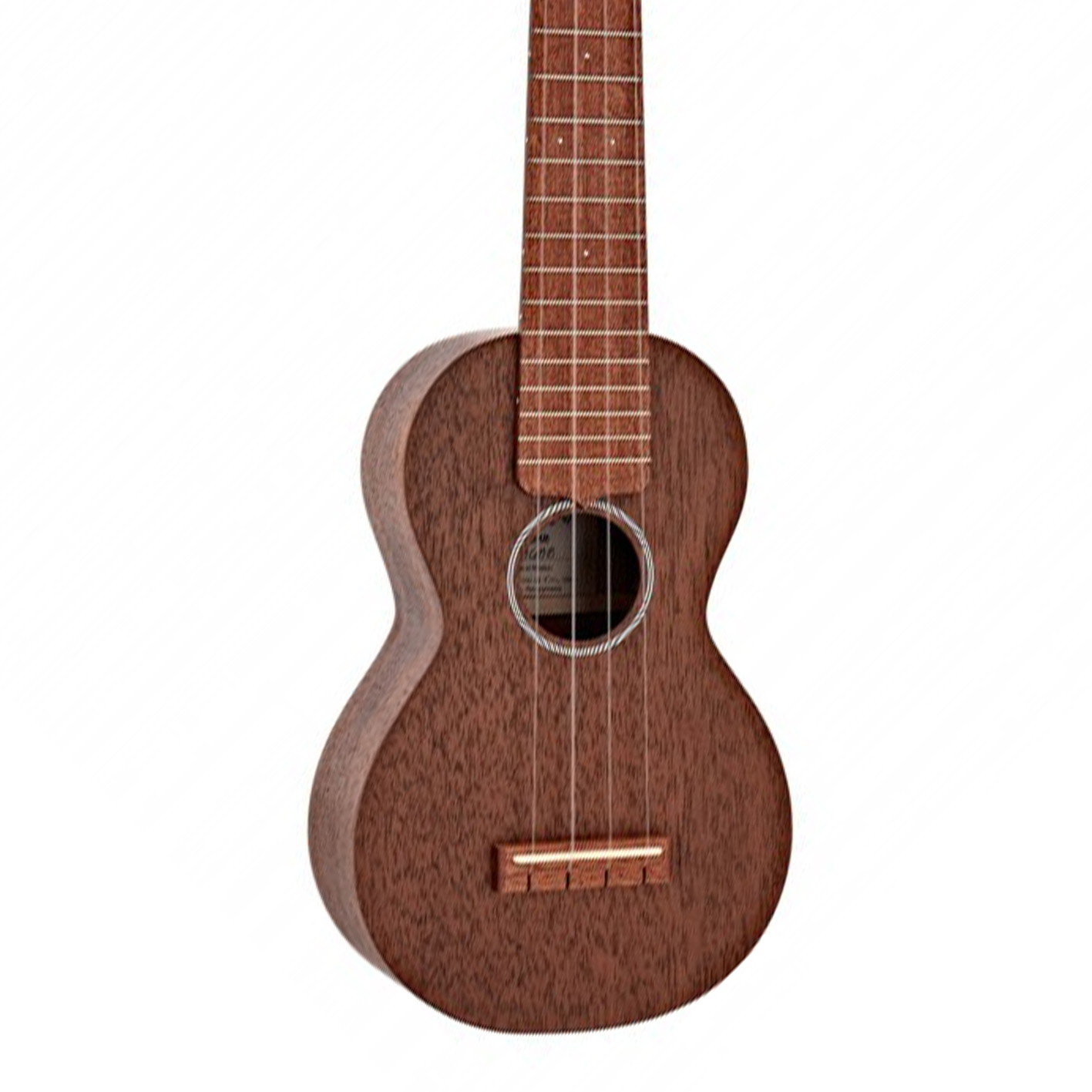
The Martin S1 has to be one of the best ukuleles we've had the pleasure of testing. Its sweet tone and powerful projection complement its rugged, handsome good looks - and as it is built by Martin, you know the built quality will be outstanding.
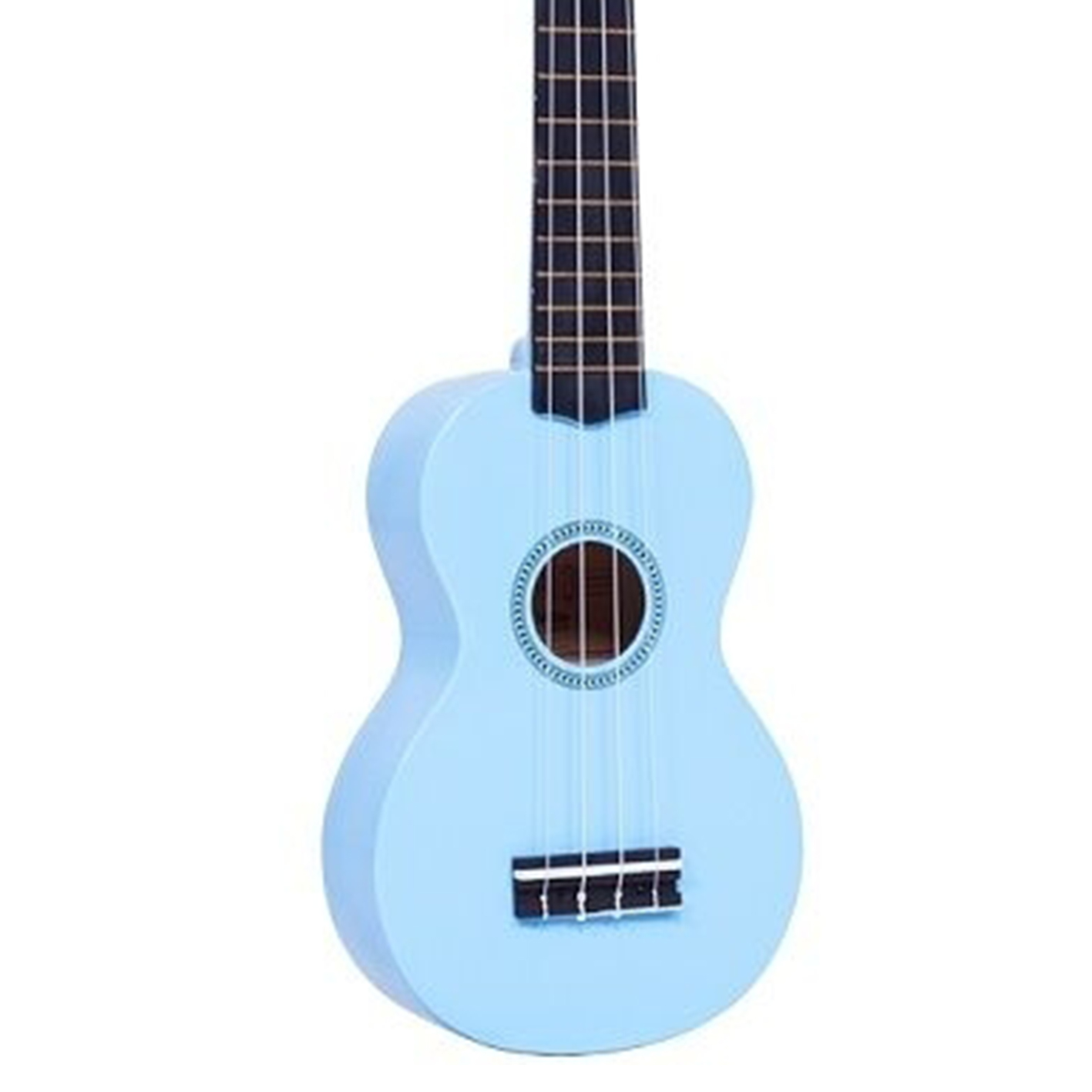
While Mahalo's basic models won't set the world on fire, we've always found that they are fairly durable, hold their tuning, and despite the very low cost, they sound pretty decent. If you're looking to dip a tentative toe into the world of ukulele, this is your most affordable route.
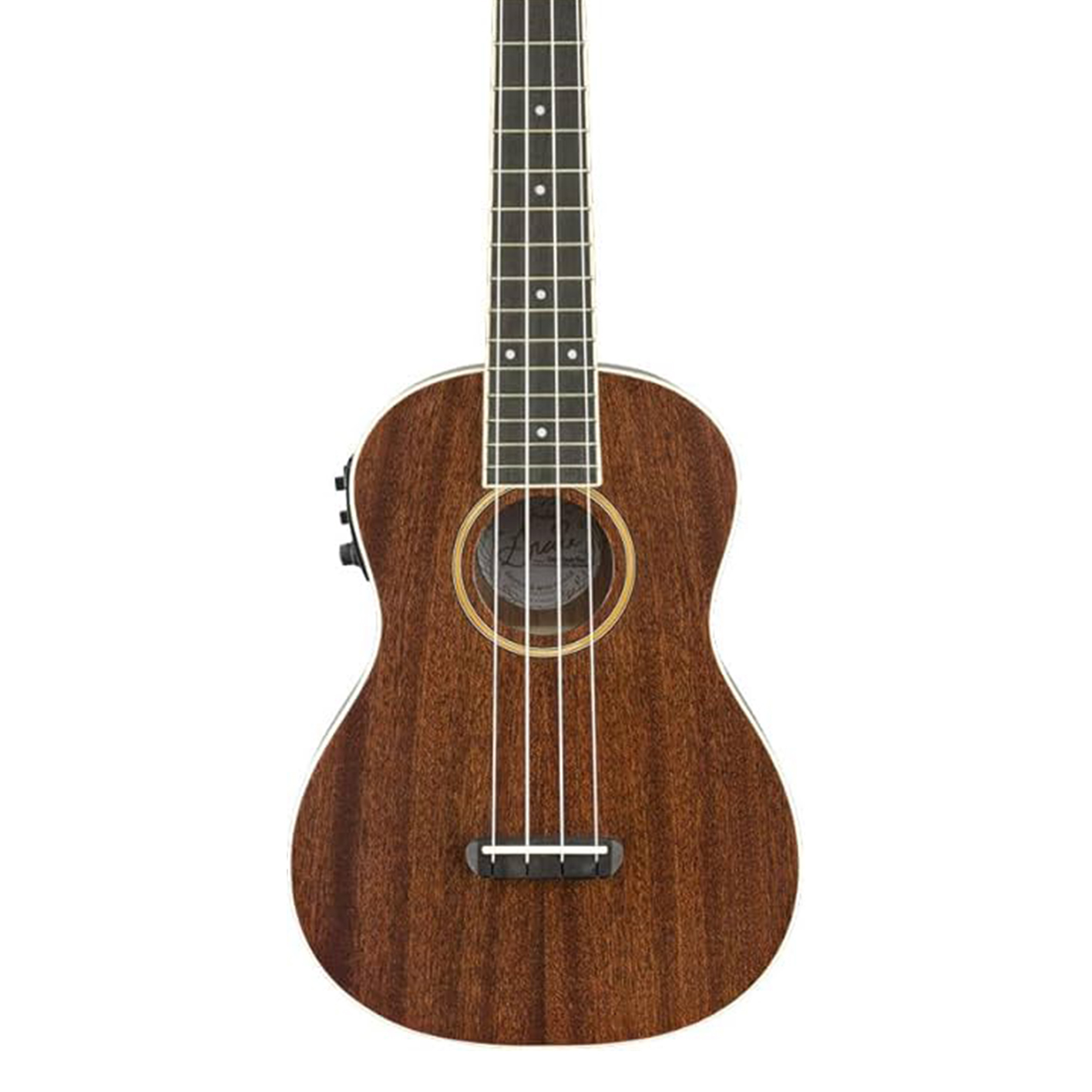
For an electro-acoustic uke that doesn't compromise on quality but is still relatively affordable, it's hard to do better than this model from Fender. The Fishman pickup means that this uke not only sounds great unplugged but can be run through a PA or amp for gigs, too.

The Kala doesn't go in for bells and whistles; rather it's a solid instrument from a company with decent form. A very noticeable step up from the rung above entry-level ukuleles, the Kala is more than enough for most uke players to play at home, or go out and play with others and never feel short-changed.
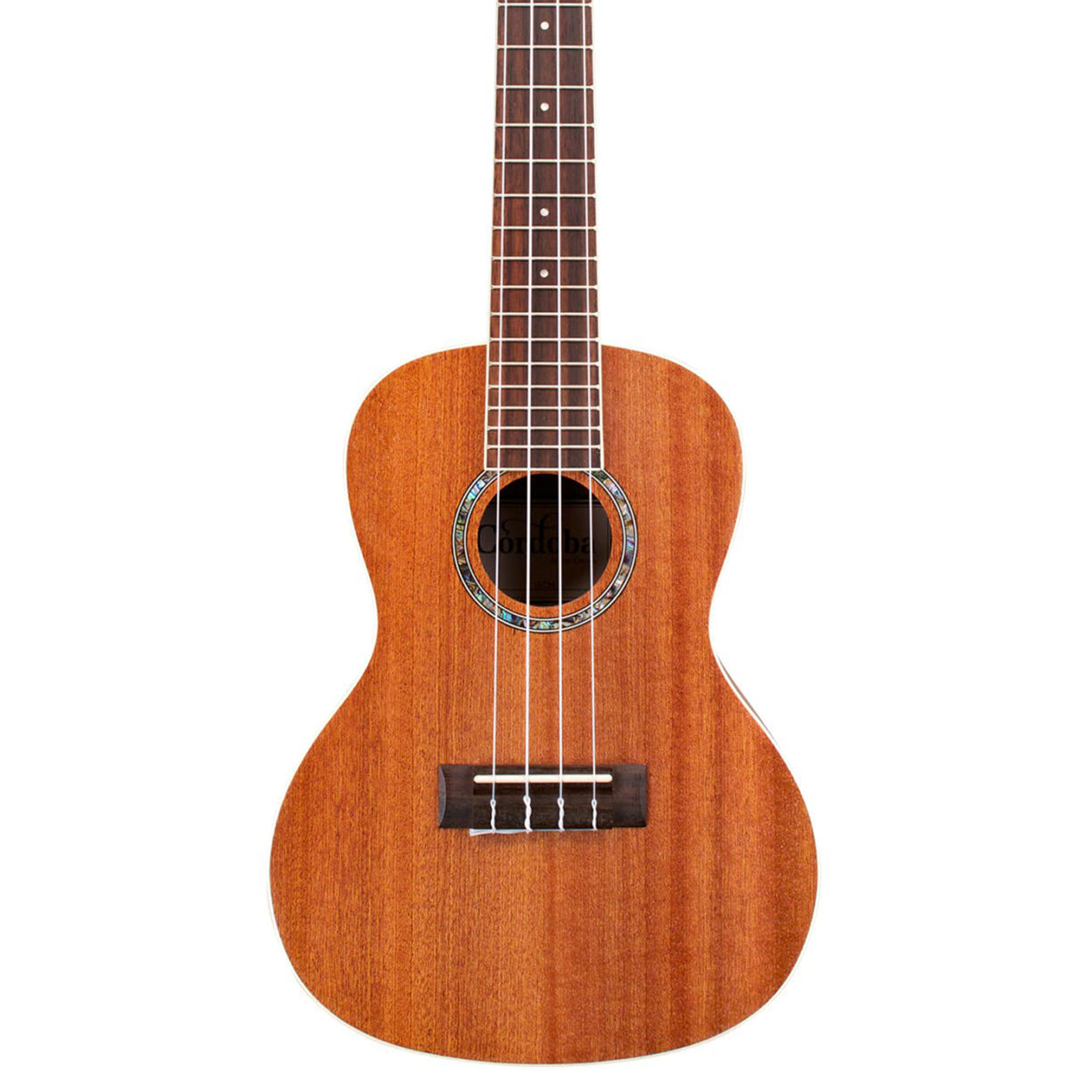
Considering the price of the uke you get rather a lot for your money with the Cordoba 15CM Concert Ukulele. Built with attention to detail and rigid quality control, this is a great instrument for a beginner or more seasoned player.
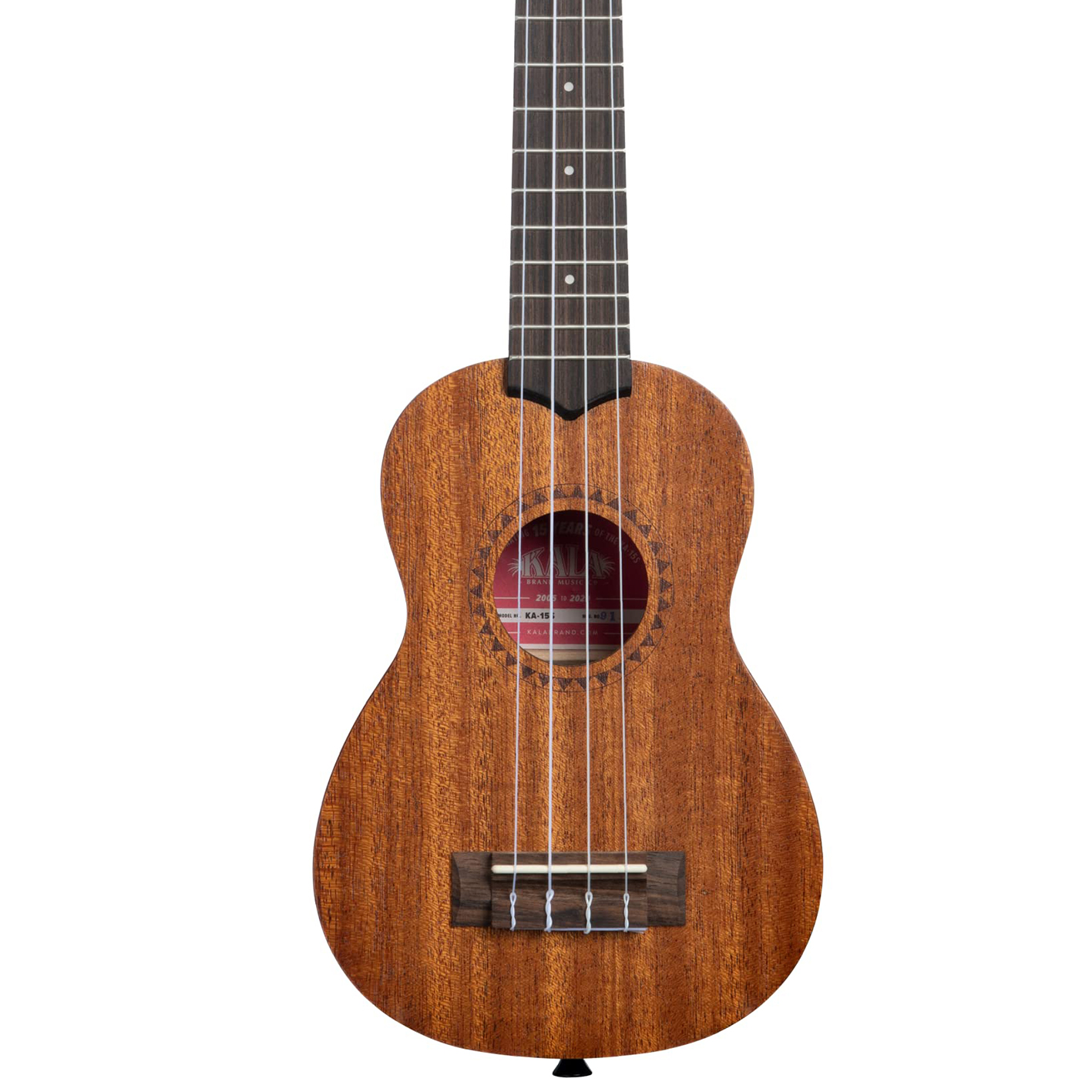
The Kala KA-15S is a small soprano ukulele that’s perfect for younger players looking to get to grips with the instrument. It really is tiny at just 21 inches in length, but that makes it super-lightweight, easy to hold, and incredibly portable.

The Fullerton Strat is an ideal ukulele for anyone who's a self-diagnosed Fender addict. It's a good-looking, well-made and even features a built-in pre-amp, giving you the option to enjoy it unplugged or plugged in.
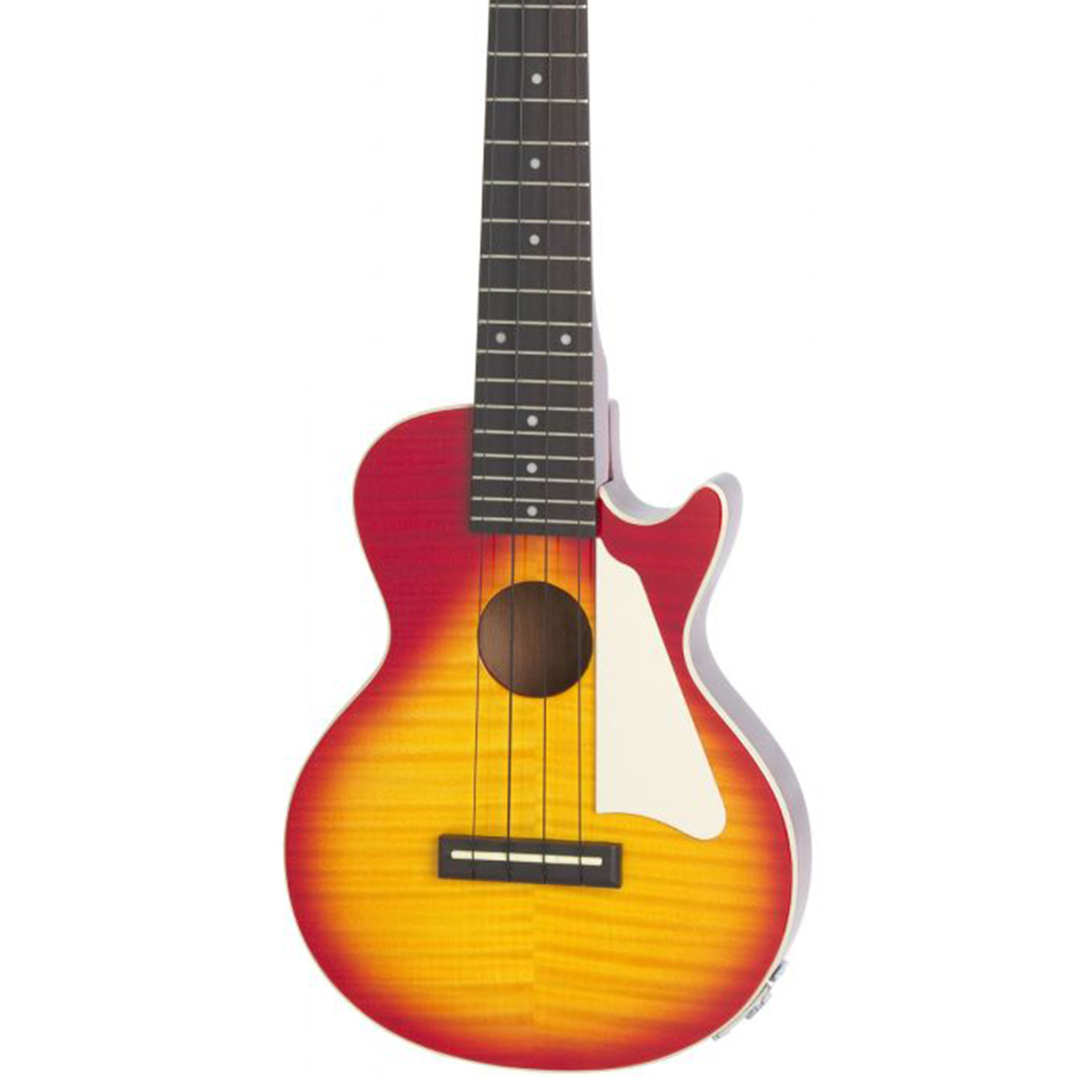
If you really want to play ukulele, but you’re worried about looking uncool in front of your mates then the Epiphone Les Paul Ukulele will turn heads for the right reasons. Marrying the classic LP shape but in a tenor-sized uke, it’s a brilliant-looking instrument that plays great too.
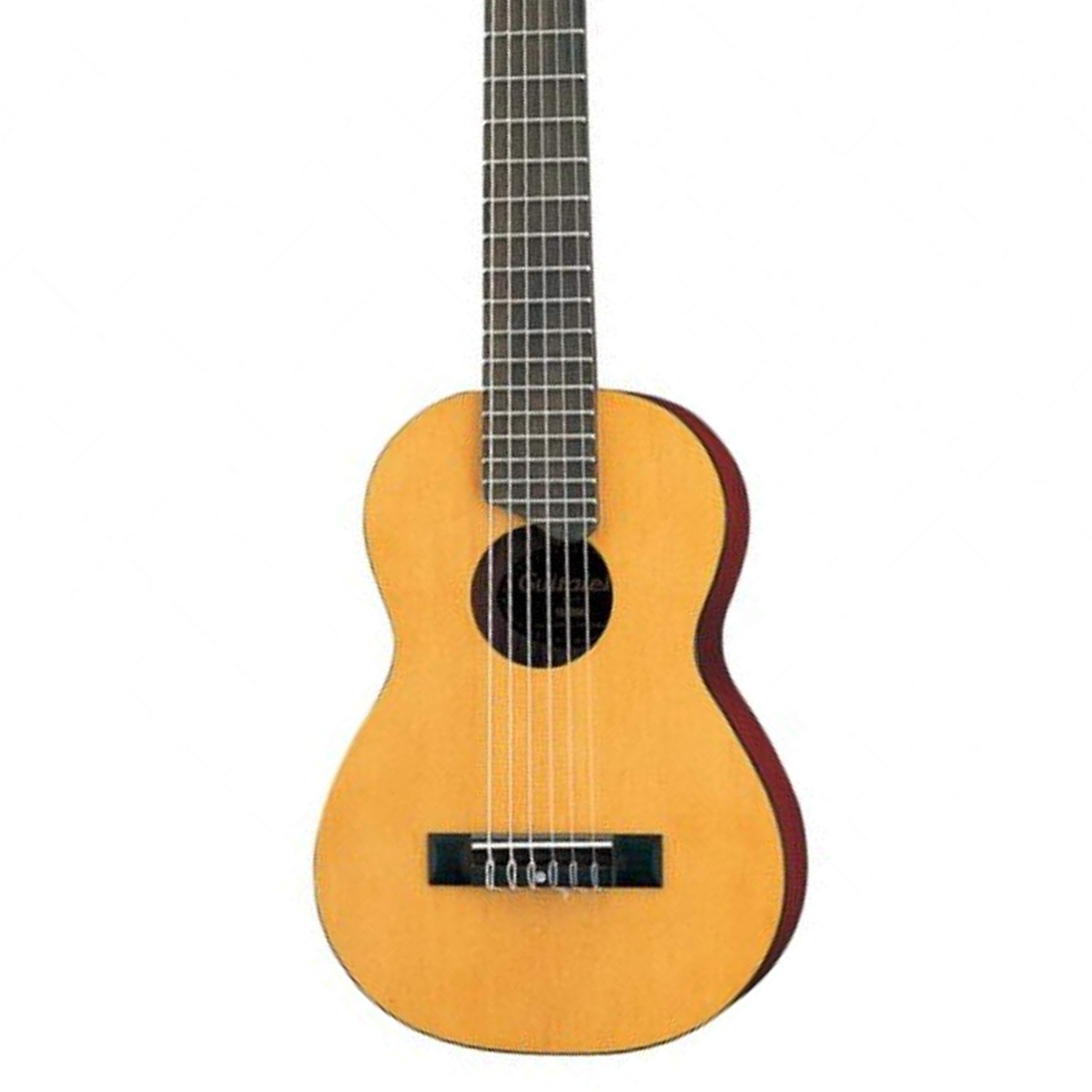
If you've always wanted a guitar but are unsure about the size of a three-quarters, or even half-sized axe, then a guitalele could be for you. Alternatively, if you're already a guitar player and you can't say goodbye to those two extra strings, then this could be a gateway to the uke.
Best overall
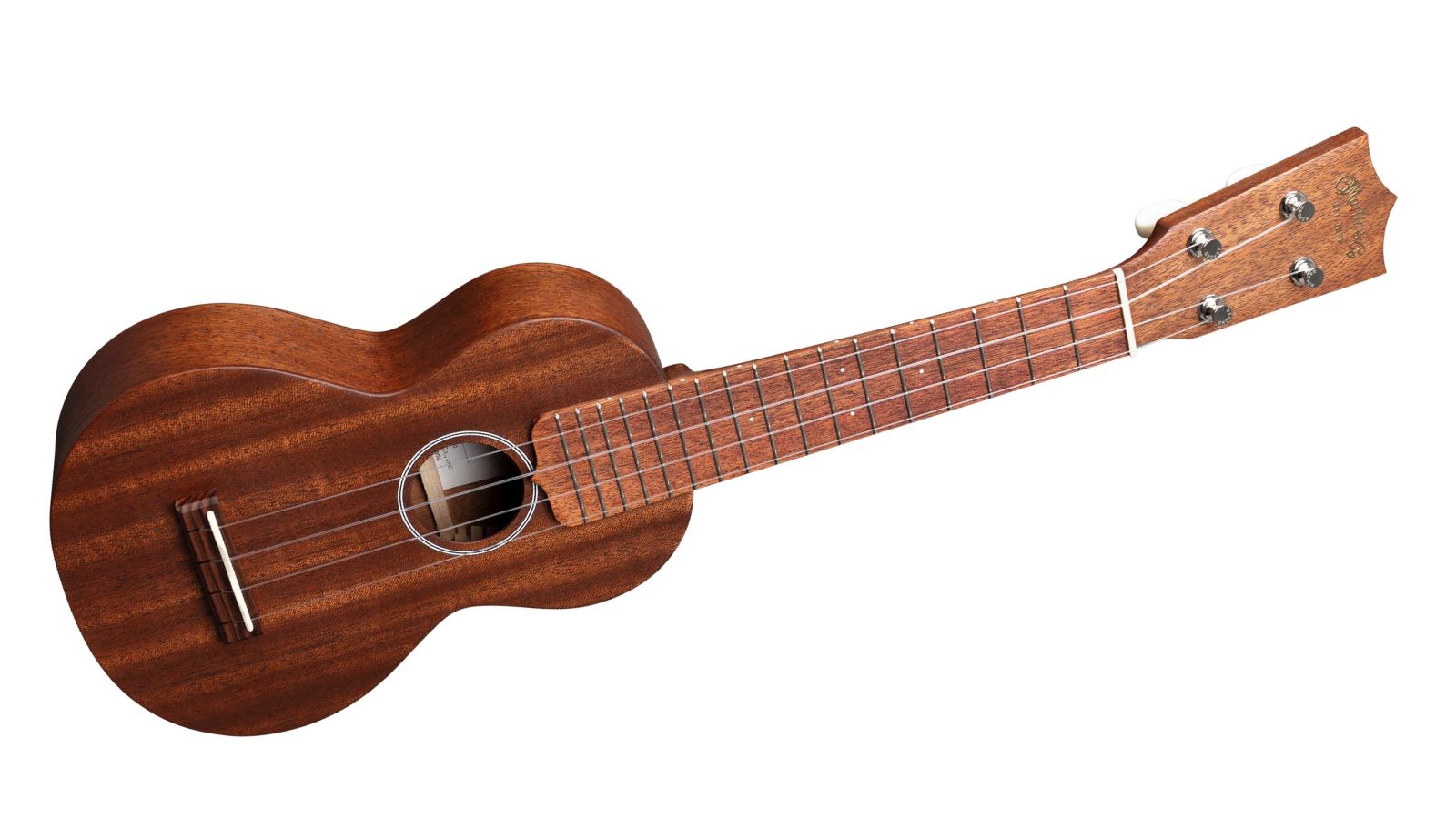
1. Martin S1 Soprano Ukulele
Our expert review:
Specifications
Reasons to buy
Reasons to avoid
The Martin S1 has to be one of the best ukuleles we've had the pleasure of testing. Its sweet tone and powerful projection complement its rugged, handsome good looks - and as it is built by Martin, you know the built quality will be outstanding.
The S1 features an all-mahogany construction, which is much better suited to the higher range of the instrument than a brighter tonewood. It still sounds very rich and full-bodied strumming open chords, whilst retaining that typical 'plink' you'd expect from an instrument of this scale length.
Well-known for its fantastic range of high-end acoustic guitars, it's no surprise that a Martin should be at the top of the pile. While there are more expensive ukes from both Martin and other manufacturers around, for most people the S1 will be more than good enough and should last a lifetime.
Best budget ukulele
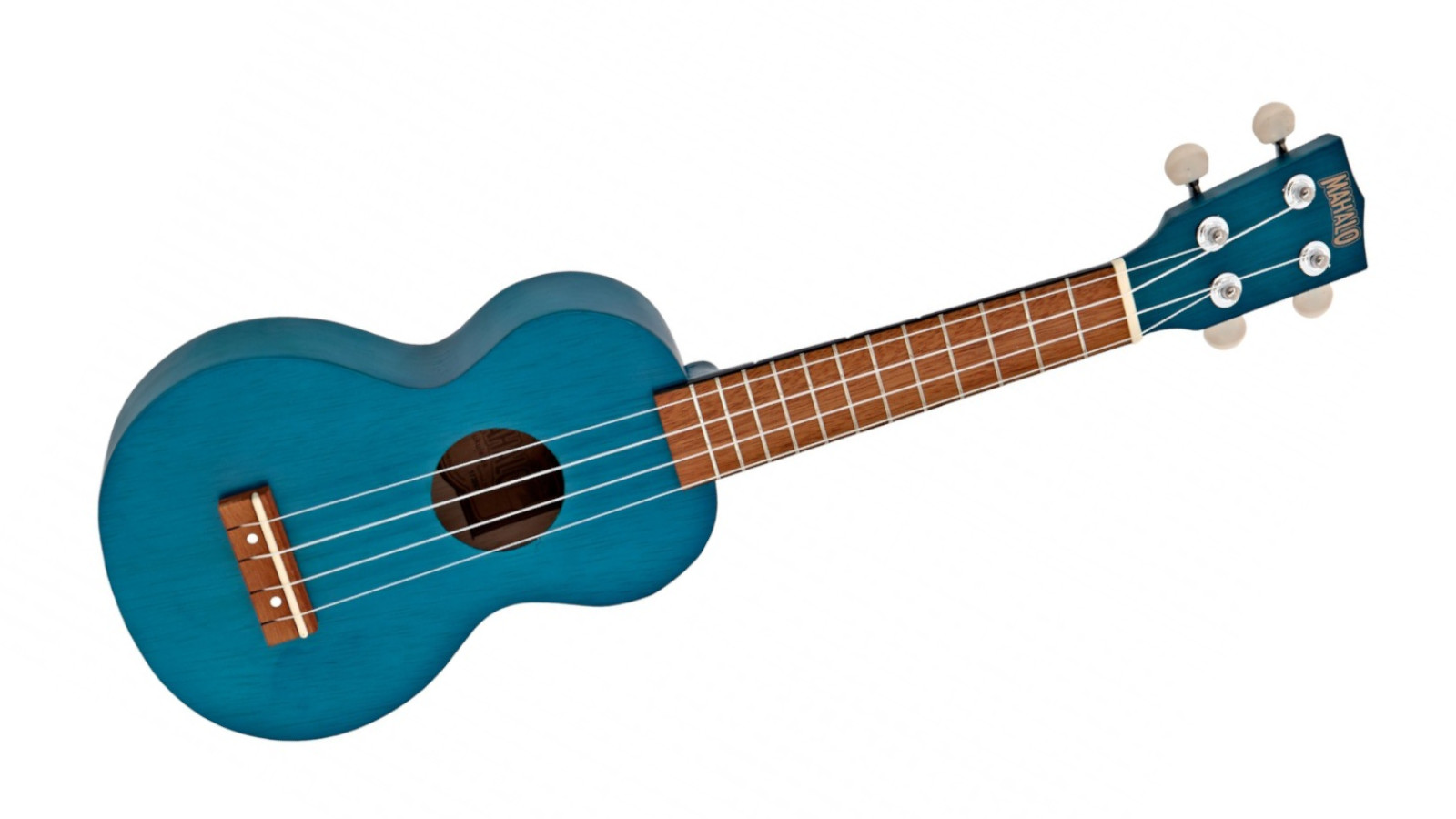
2. Mahalo Soprano Ukulele
Our expert review:
Specifications
Reasons to buy
Reasons to avoid
Whether it's stuffed on a friend's bookshelf or above the bar at a Hawaiian-themed club, if you've seen a uke somewhere, chances are it's a Mahalo. The basic models won't set the world on fire, but we've always found that they are fairly durable, hold their tuning okay, and despite the very low cost, they sound pretty decent.
If you have the additional cash, then you'll notice a big difference stepping up to the Fender and Kala models on this list, but if not, this is an excellent ukulele if you're just starting out.
With a range of designs, from printed patterns on a traditional-shaped body, to 'flying V' ukes, and everything in between, there's probably a version of this uke to suit your personality.
Best for live
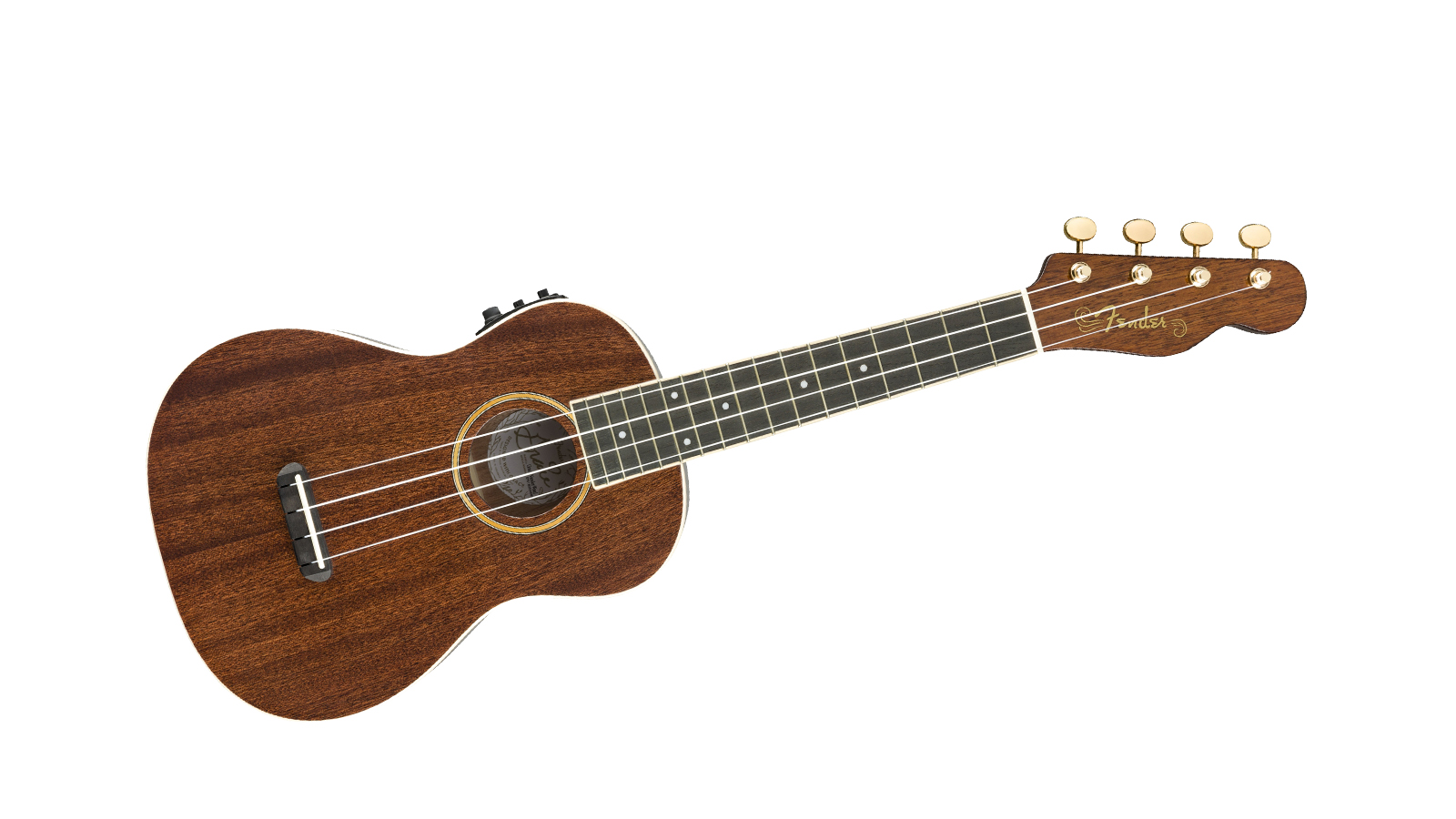
3. Fender Grace VanderWaal Zuma Signature
Our expert review:
Specifications
Reasons to buy
Reasons to avoid
For an electro-acoustic uke that doesn't compromise on quality but is still relatively affordable, it's hard to do better than the Fender Grace VanderWaal Zuma signature ukulele.
With a Fender headstock modeled on the Telecaster and a Fishman pickup, this uke not only sounds great unplugged but can be run through a PA or amp for gigs. It's voiced as a concert, so fingering will be a little easier than a Soprano - at least that's what we found with our big fingers - and the sound is a little fuller in the bass, too.
Fender also makes a variant without the pickup, but the addition of the Fishman elevates this from a decent ukulele to a perfect all-rounder. There's a good chance even a serious player would never need another uke.
Best for tone
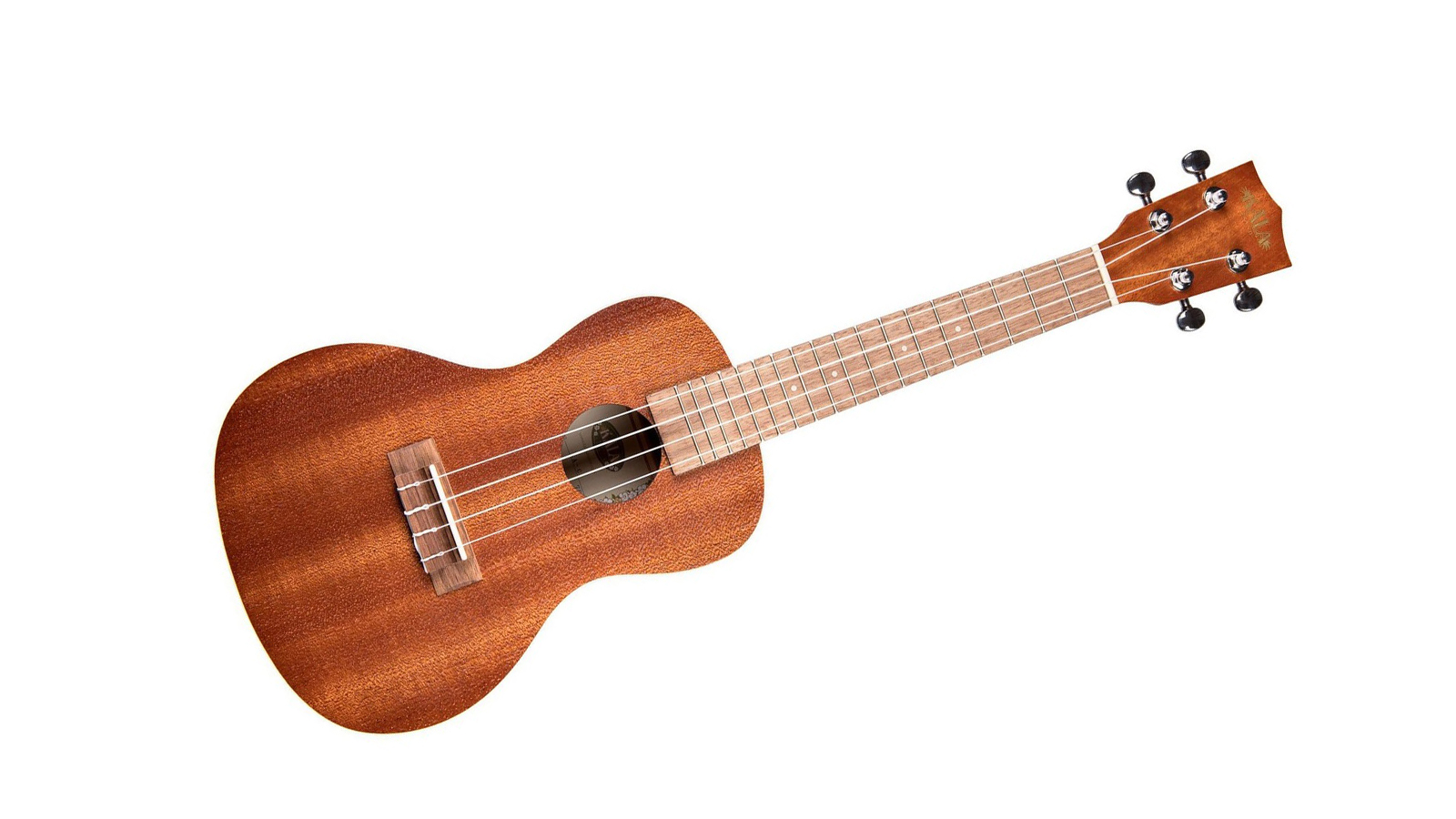
Specifications
Reasons to buy
Reasons to avoid
If the pickup on the Grace VanderWaal isn't of interest, but the regular Zuma is well within your price bracket, then the Kala Mahogany could be worth the additional outlay.
The Kala doesn't go in for bells and whistles; rather it's a solid instrument from a company with decent form. A very noticeable step up from the rung above entry-level ukuleles, the Kala is more than enough for most uke players to play at home, or go out and play with others and never feel short-changed.
In our tests, we found that the mahogany construction offered a darker tone, which complements its concert voicing, and we have to say, the subtle body binding adds to its charming good looks.
Read the full Kala KA-C Satin Mahogany Concert Ukulele review
Best all-rounder
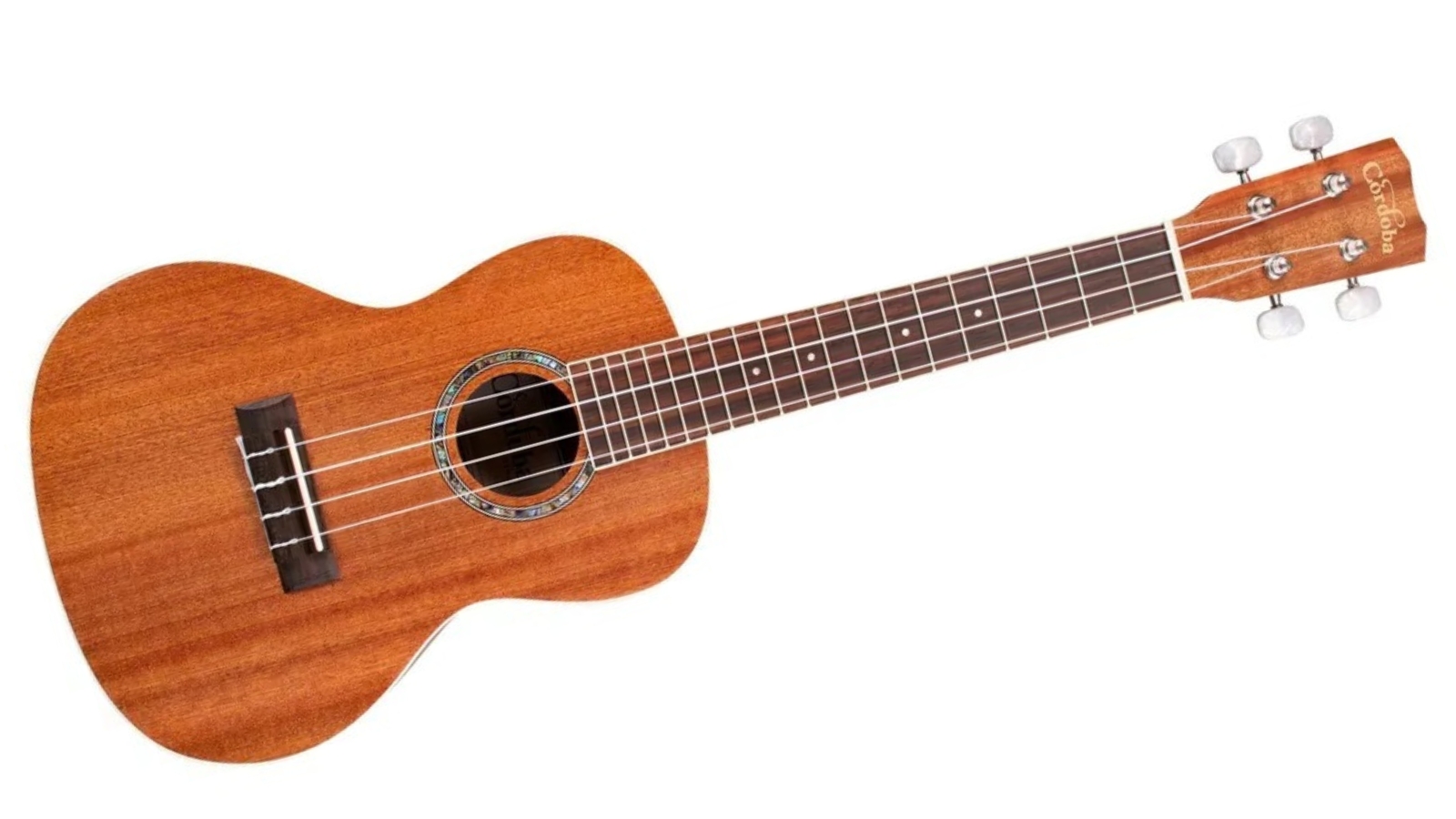
Specifications
Reasons to buy
Reasons to avoid
Considering the price of the uke you get rather a lot for your money with the Cordoba 15CM Concert Ukulele. Built with attention to detail and rigid quality control, this is a great instrument for a beginner or more seasoned player.
The top, back, and sides are all made from quartersawn mahogany, giving it a warm tone to complement the snappy resonance inherent in most ukuleles. Quartersawn wood is more rigid than other cutting methods, giving this uke its lively voice.
It also has some nice visual touches you’d usually expect to find on ukes twice the price. The hand-inlaid abalone rosette lends a premium feel to it, with ivoroid binding to complete the stellar look.
Read the full Cordoba 15CM review
Best for kids
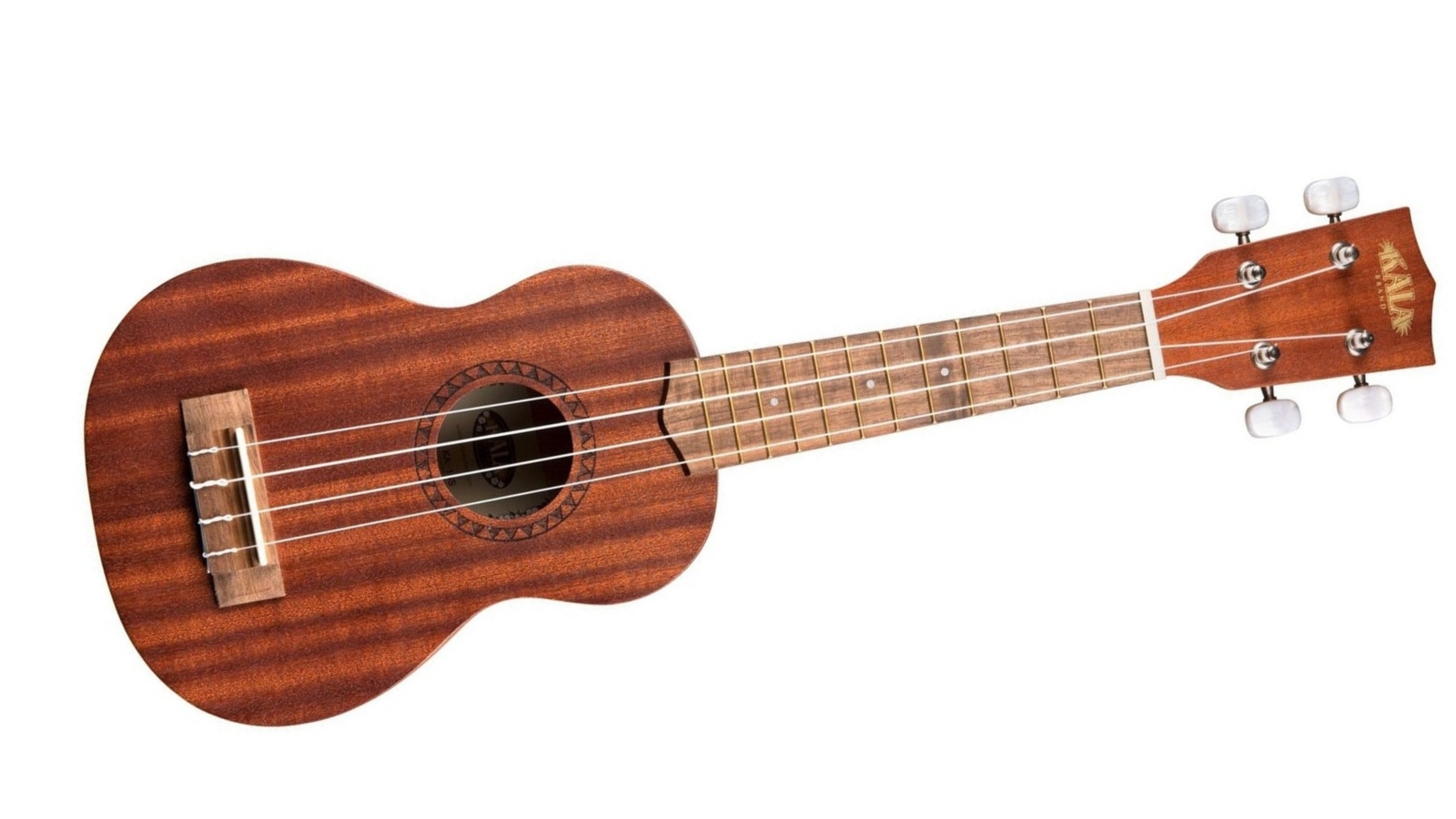
Specifications
Reasons to buy
Reasons to avoid
The Kala KA-15S is a small soprano ukulele that’s perfect for younger players looking to get to grips with the instrument. It really is tiny at just 21 inches in length, but that makes it super-lightweight, easy to hold, and incredibly portable.
Due to its small size, the sound is very treble-heavy but it’s surprisingly loud when you strike the strings hard. There’s a nice sustain to it as well, even when you fret the notes they still ring out for a decent amount of time.
Due to its small size, it also has a very short scale length so if you have bigger hands, we’d look for something like a concert or tenor ukulele. For young players, however, this sizing is perfect for getting your first chord shapes down.
Read the full Kala KA-15S Soprano Ukulele review
Best for Strat fans
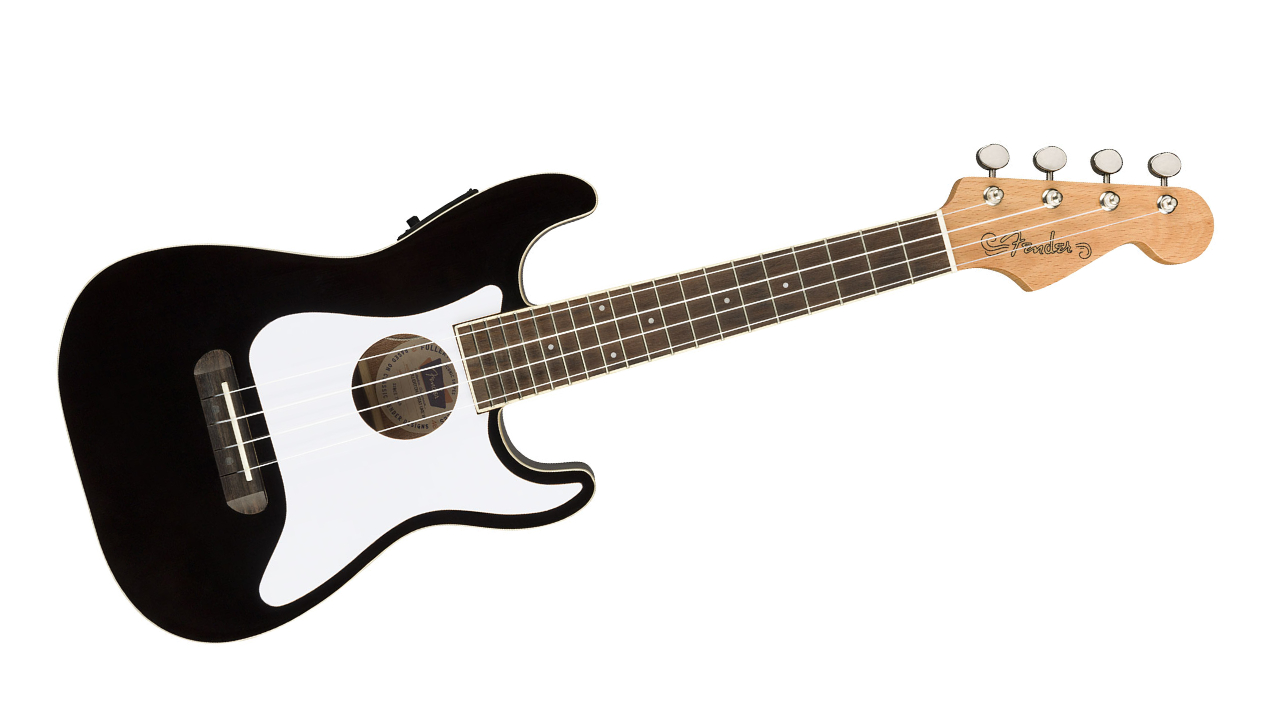
7. Fender Fullerton Stratocaster Ukulele
Our expert review:
Specifications
Reasons to buy
Reasons to avoid
The Fullerton Strat is an ideal ukulele for anyone who's a self-diagnosed Fender addict. All novelty value put aside, the Fender Fullerton Stratocaster uke is a good-looking, well-made instrument which will bring a smile to the face of nearly everyone who takes a look or picks one up. The inspiration for the body shape is obvious, and while the aforementioned novelty value of a Strat-shaped uke may wear off after time, the sound and feel of this concert-voiced ukulele will bring you pleasure for years to come.
The Fullerton Strat ukulele even features a built-in pre-amp, giving you the option to enjoy it unplugged or plugged in to one of the best guitar amps if you so wish. You might not find those Hank Marvin or John Frusciante-inspired Strat tones, but the Fullerton Strat ukulele still sounds rich and pleasing. This projection and tonal warmth is down to the mahogany and spruce body. Honestly, we're thoroughly impressed.
Granted, it's not cheap - especially if you're a beginner to the world of the ukulele - but in our opinion, you do get what you pay for. The build quality and sound quality surpass other ukuleles of a similar price and style - and if that name on the headstock is important, then this could be the best uke for you.
Best for fret access
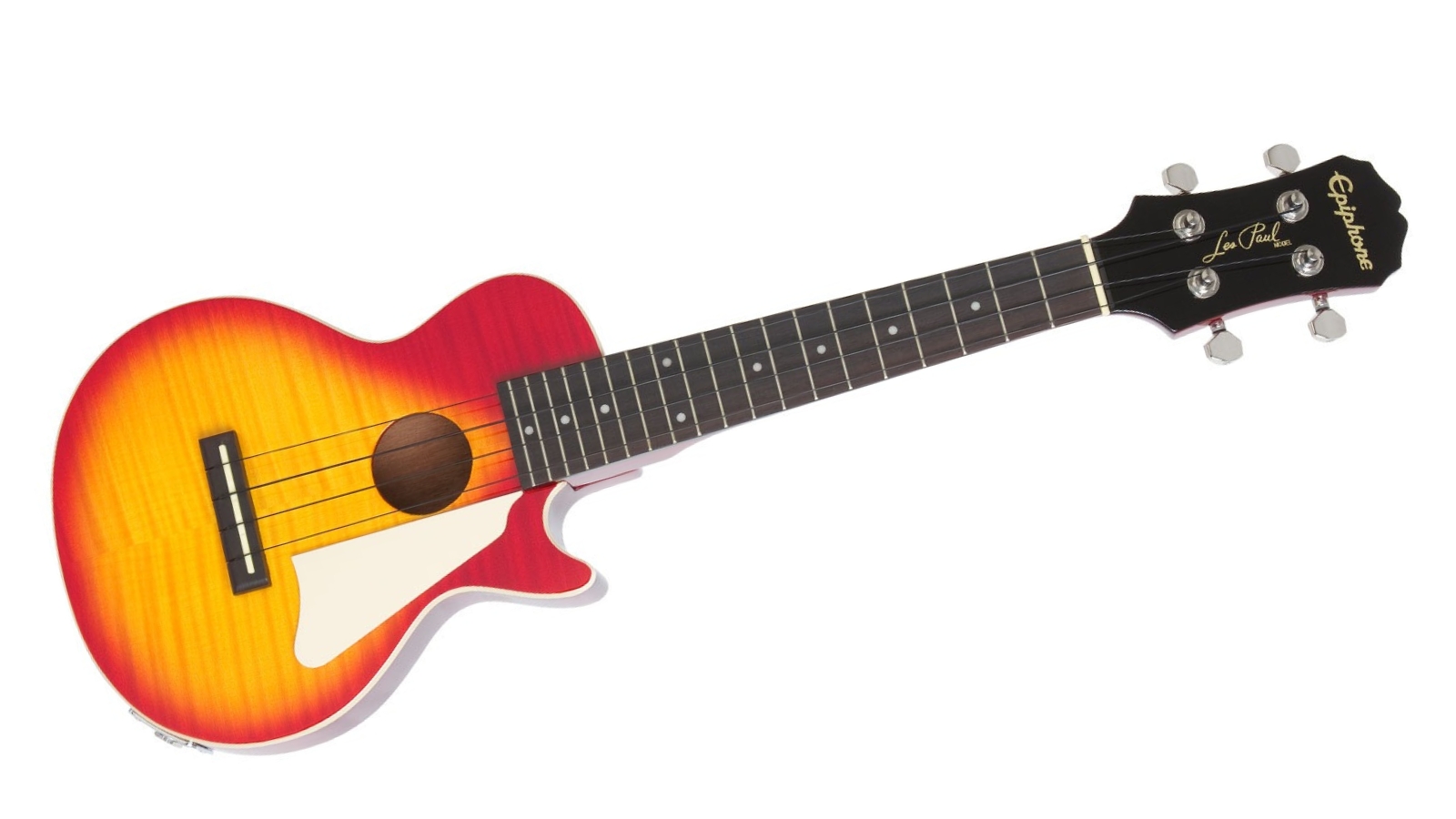
8. Epiphone Les Paul Ukulele
Our expert review:
Specifications
Reasons to buy
Reasons to avoid
If you really want to play ukulele, but you’re worried about looking uncool in front of your mates then the Epiphone Les Paul Ukulele will turn heads for the right reasons. Marrying the classic LP shape but in a tenor-sized uke, it’s a brilliant-looking instrument that plays great too.
The all-mahogany construction lends this uke a warm tone and excellent volume when unplugged. Plug it in and you get a whole new lease of life from the under saddle pickup, allowing you to run it through effects like you would a guitar, or just clean into a PA system for a live performance.
It’s got a D-shaped, SlimTaper profile neck just like their electric guitars have and it plays beautifully. Being able to reach the upper frets thanks to the cutaway makes it even more fun and to round everything off, you get a AAA flame maple top.
Best gateway uke
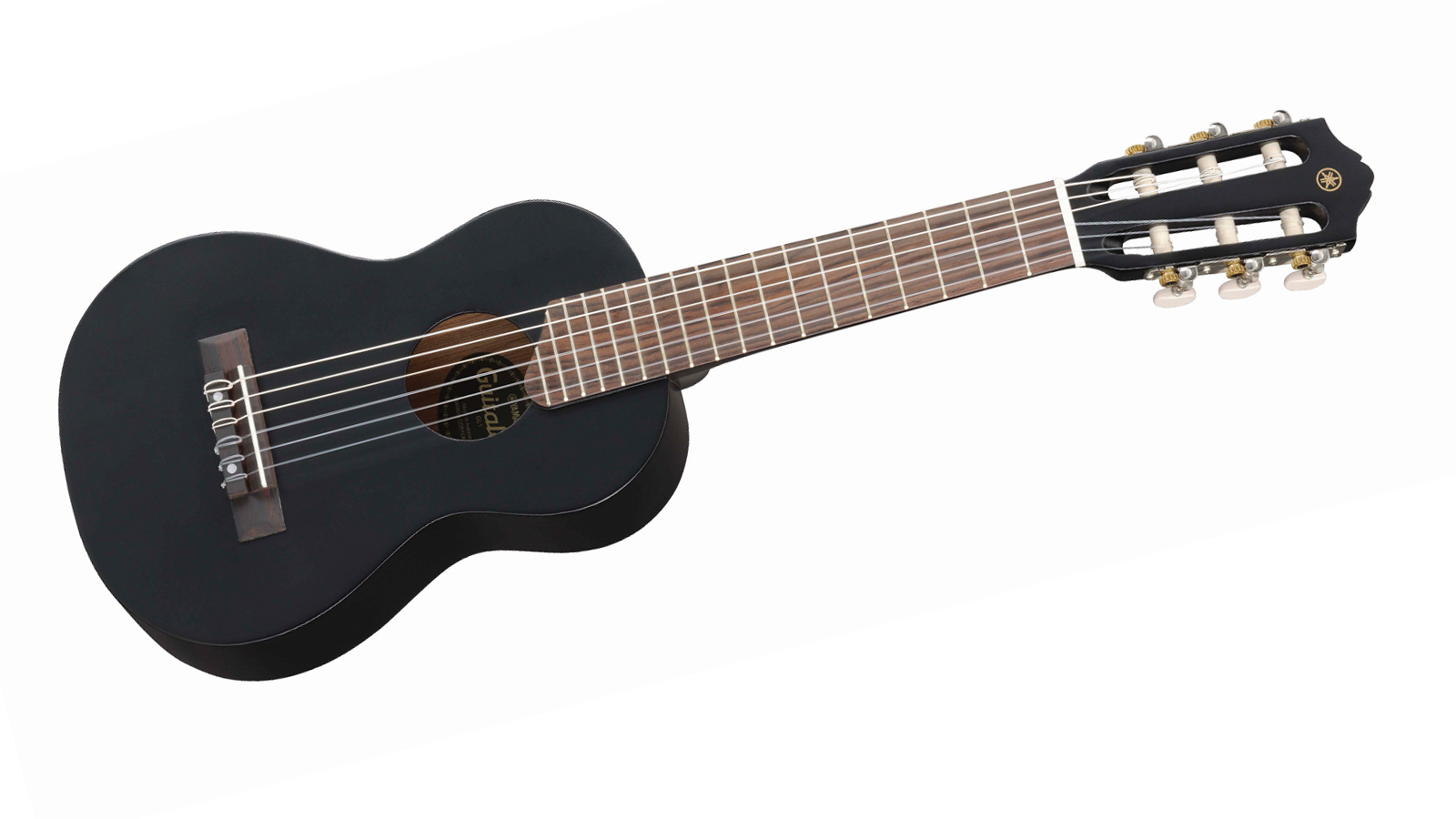
9. Yamaha Guitalele ukulele
Our expert review:
Specifications
Reasons to buy
Reasons to avoid
If you've always wanted a guitar but are unsure about the size of a three-quarters, or even half-sized axe, then a guitalele could be for you. Alternatively, if you're already a guitar player and you can't say goodbye to those two extra strings, then this could be a gateway to the uke.
Released by Yamaha a decade before the current uke boom, they're only just now becoming more widely available. Tuned to A, and without the re-entrant 'G', it really does sit perfectly halfway between guitar and uke, hence the name.
Essentially, It's neither a guitar, nor a ukulele - but as much as this might put people off, the unique status and position of this instrument within the market makes it one that bridges the gap especially well. Granted, if you want a uke, this isn't it - but if you're undecided, then this guitalele just might help you decide. Thankfully, the price isn't too high - so it's win/win, in our opinion.
In terms of voicing, we think it sits in a similar ballpark to a baritone uke. The GL-1 provides a thick tone, with a better bass response than most ukes on the market.
Read the full Yamaha Guitalele GL-1 review
Buying advice
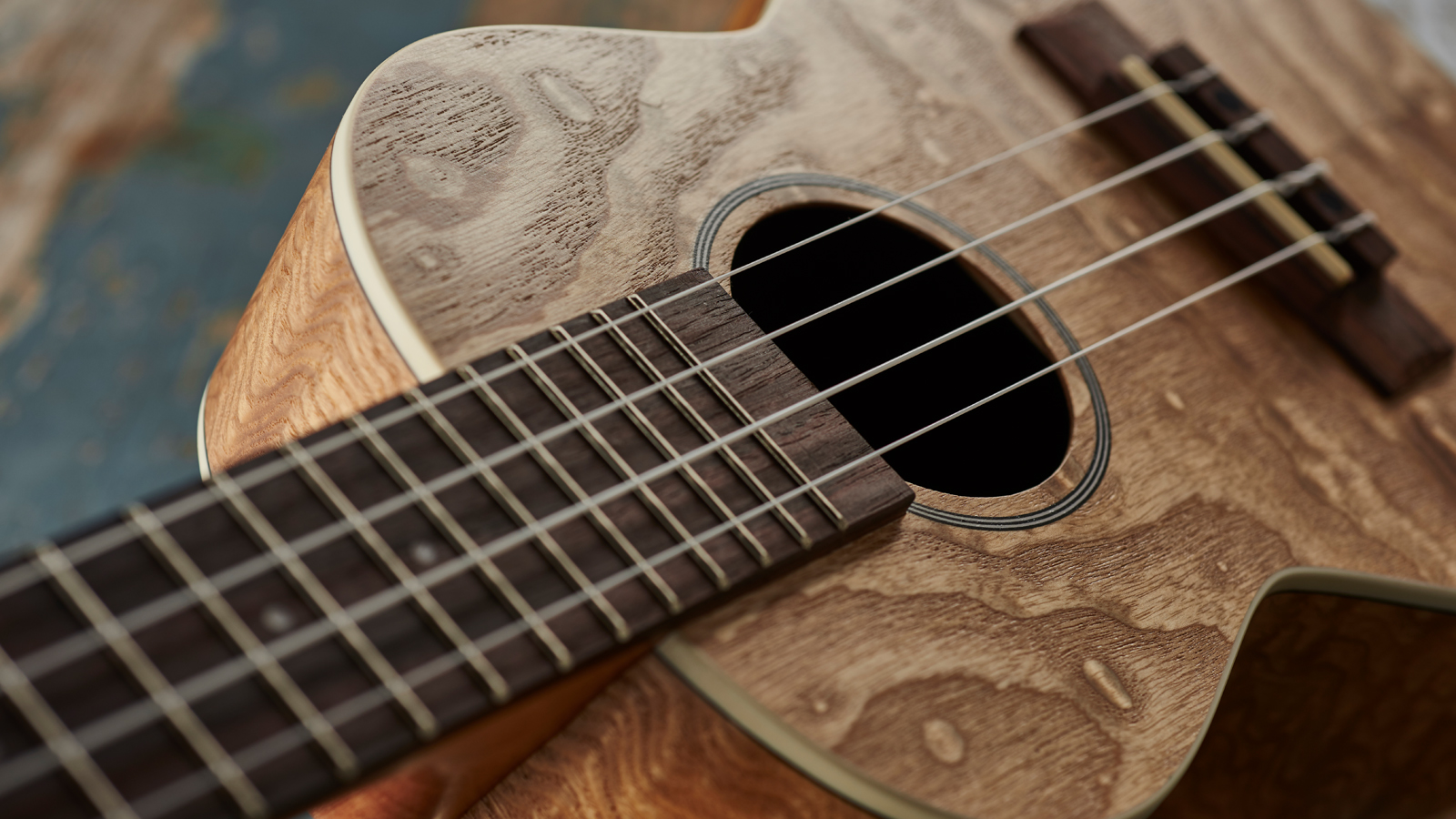
Are ukuleles easy to play?
To play anything well takes time and practice. But generally, yes, ukuleles are fairly easy to play, in that they are light and not at all cumbersome, so almost everyone can hold one properly straight away, particularly if it’s a soprano or concert size you’re looking at. Ukes have a relatively short scale so the frets are close together too, meaning that a lot of chord shapes are easy to achieve for small hands. It’s also easy to strum with your fingers or a plectrum.
What types of ukulele are there?
So far, we've been looking at the soprano uke, which is the most popular and widespread model available. But it's not alone in ukedom. The concert ukulele is slightly larger by a couple of inches and usually boasts 14 – 17 frets to the soprano's 12 – 15. Tuning is the same, but it can be easier for larger-fingered players to get their digits around its slightly bigger frame and fretboard. A concert uke should have better bass response too, but the downside is that it's not quite so portable.
A tenor ukulele is considerably bigger than a soprano. If a soprano is typically about 21 inches long, then the tenor will be 26 inches or more. Again the tuning is the same but the fretboard can have room for 19 or more frets. A fantastic choice for performers who value bass response and a higher treble range, despite the increase in size.
The baritone ukulele is an interesting choice. With a body length of 30 inches plus, and a less elongated shape, it looks more like a regular guitar. The similarities don't end there. With 21 or more frets it feels more guitar-like and, what's more, the tuning is the same as your favorite acoustic too. It still only has four strings but these are tuned to DGBE. The only downside is its comparatively vast size.
What is the best ukulele for beginners?
The best ukulele for beginners is probably a soprano uke. Thanks to its small size and narrow fret spacing, it’s perfect for players with smaller fingers and less hand strength to get to grips with. Also because of the small body size, they’re easy to wield and lightweight too, perfect for taking to school alongside your backpack.
How do you tune a ukulele?
Now, we know this sounds a bit confusing - but bare with us and it will all make sense. Take the six open strings on a guitar in standard tuning: EADGBE. Discard the two bass strings (the thickest ones) and you're left with DGBE. These are the same notes as the seventh fret of a ukulele. The fretboard map is exactly the same, it's just been shifted, or transposed, up seven frets (or down five).
Look at it another way. The open strings on a ukulele in standard tuning are GCEA. Pick up your guitar, ignore the two bass strings and you'll find these notes at the fifth fret. Studying a fretboard diagram for just two minutes will make all this much clearer but essentially if you can play chords on the guitar then you can play them on the ukulele, you just have to move up seven frets or down five.
OK, there is one other important difference but it's really not a biggie. The fourth string, which is the one closest to a cloudless sky if you really are lucky enough to be playing on a tropical beach, doesn't produce the lowest note. In fact, it produces the second highest. So, looking at open strings again the third string C is actually the lowest, followed by the second string E, then the fourth string G, and finally the first string A. This is called re-entrant tuning and it’s an idiosyncrasy inherited from the cavaquinho before it, and the lute before that.
But why would you do that, we hear you ask? Some say that centuries ago it was impossible to reliably manufacture accurate bass strings so a higher string was always used. Others believe that a high fourth string makes certain chord voicings easier to play. Whatever the truth, most of us would agree that it's a re-entrant tuning that gives the ukulele its unique, characteristic sound.
If the complexities of ukulele tuning fill you with horror (they really shouldn't) then consider a Yamaha Guitalele, which is essentially a uke-sized guitar. Buy some high-tension strings and you can even tune it exactly the same as your guitar, and get the fretboard map to match.
Does the wood make a difference to the sound of a ukulele?
In terms of construction, the wood used to make a ukulele can drastically alter the sound of the instrument. What appeals to your ear will differ from person to person, but as a rule of thumb, 'darker' woods work better on the higher soprano ukulele, while 'brighter' woods work better on tenor and baritone ukuleles.
With acoustic instruments, solid wood, as opposed to laminate or layered wood, is usually preferred. Solid refers to how the body is constructed. Solid wood vibrates more freely than layered wood, resulting in a richer sound. It also changes and matures slightly over time as it gradually breaks in. Top-end ukes might feature a body with all-solid wood construction, whereas some might have just a solid top, and layered back and sides – these still sound great, but are slightly more affordable than fully solid.
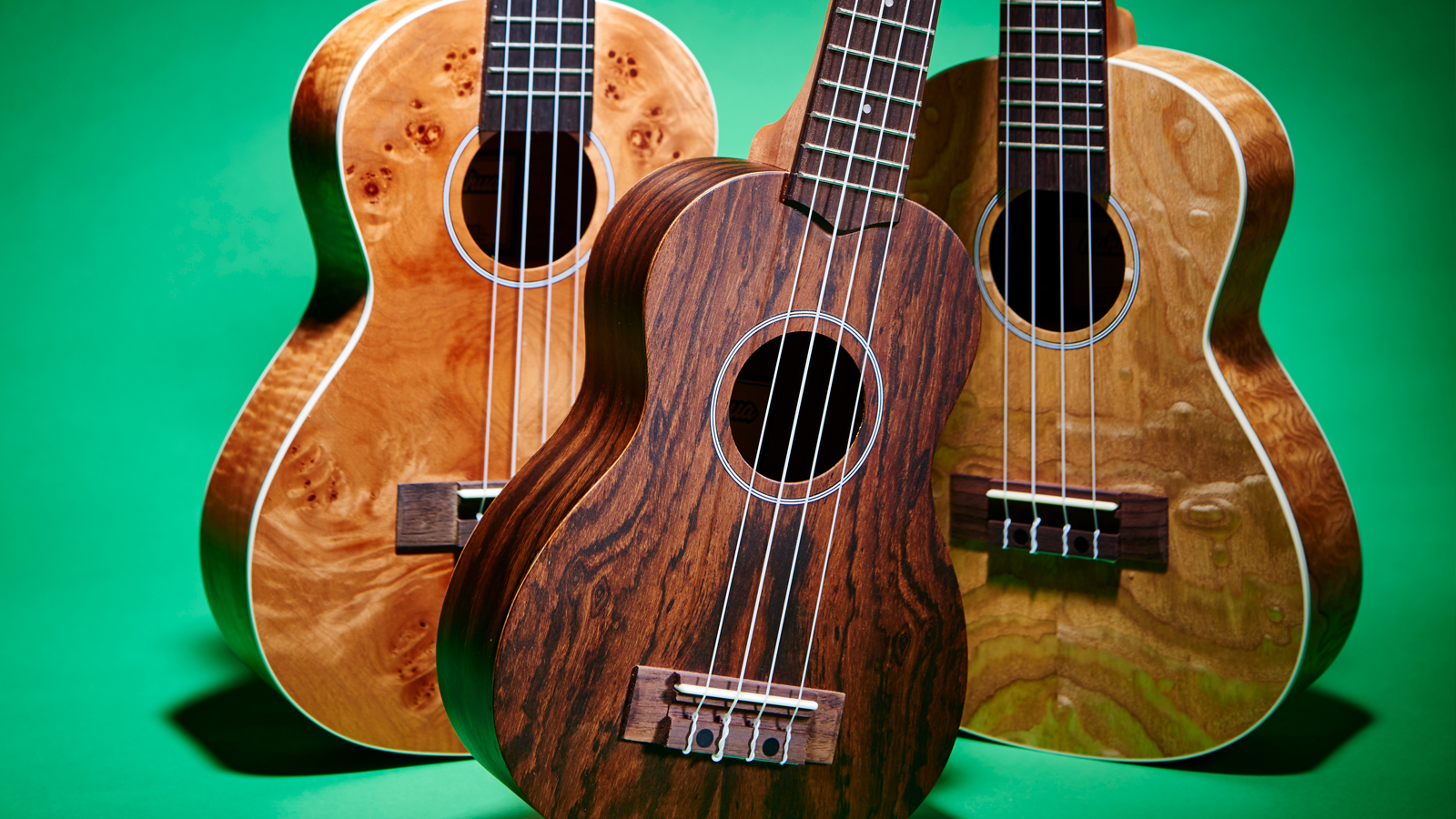
Should I buy an electric or acoustic ukulele?
All of the options in this guide can be played unplugged. So, if you’re sitting at home and fancy having a quick strum, you’re going to be able to hear it properly. However, acoustic ukes will have a deeper body which makes them louder and more resonant. Their primary objective is to sound good as they are.
Electric ukuleles on the other hand have been designed to be used in conjunction with an amp. Sure, you can play them unplugged, but you’ll find that you get the most out of it when put through an amp or PA system. Some acoustic ukes do have pickups built into them though, so you get the benefits of an acoustic ukulele, but with the advantage of being able to plug it in, should you want to, at gigs, etc.
How do you play the ukulele?
We've established that the ukulele shares so many similarities with the guitar that any half-decent guitarist, once they've overcome a few quirks, will quickly become a uke-wielding ninja.
The playing technique required is very similar, requiring very few adjustments. The obvious difference is size. Not only does the ukulele feel much smaller to hold but the fretboard is much smaller too, so allow some time for your fingers to get used to the tighter spacing.
It's rare to find steel strings on an acoustic ukulele but there's nothing to stop you from using a pick on nylon strings. Ukulele-specific picks, made from felt or leather, yield a more mellow sound that is definitely worth experimenting with.
Alternatively, there's no better time to learn to pick with your fingers, which will give you the most control over dynamics. The sound of flesh and nail-striking nylon will give you the most authentic tone possible and will help you to eke out the very best from your uke.
How much should you spend on a ukulele?
Most musicians want an inexpensive ukulele that they can have fun with as a second instrument. Highly portable and relatively robust, in that they can be tucked out of harm's way, they're fantastic for busking and for travel. You could even take one on a camping trip.
Their fun-loving vibe, and toyish good looks, mean that they're not always regarded as serious instruments, and unfortunately the world is flooded with cheap, poorly made examples.
Just like the nylon guitar market, it pays to spend enough to buy one that plays well and sounds phenomenal. Intonation should be spot on, the neck should be straight, frets should be well-finished and the tone should offer more than a gutless plinky-plonky cacophony that can jeopardize even the most enduring relationships.
Investing upwards of $/£/€50 will arm you with an instrument that sounds good and is easy to play. Spend a bit more and you'll be buying improved build quality, tone, and playability. Spend a lot more, say $/£/€250, and you'll begin to discover better tonewoods, decorative inlays, and an even richer tone.
Custom ukuleles can easily cost $/£/€4,000 or more, which may appear crazy but it's worth remembering that these are essentially mini-guitars that take just as much skill to build as any other high-end instrument. You'll be investing in an heirloom quality ukulele that's visually, and sonically, a work of art.

Do you need a ukulele?
So, can you live without a uke in your life? For better or worse, ukulele music has certainly been a feature of our lives for the past 140 years but are you ready to make some? And are we ready to listen to it?
Ukulele-tinged music may be most dominantly established in Hawaiian culture but during the early 20th Century the instrument found huge popularity in folk, jazz, and vaudeville.
Its popularity waned after the 1960s but more recently the uke has benefitted from a resurgence in interest. This has been fuelled by the skills of traditional Hawaiian virtuosos, such as Israel Kamakawiwo'ole, as well as the somewhat tongue-in-cheek efforts of ensembles such as The Ukulele Orchestra of Great Britain. Since it was posted in 2006, composer and YouTube sensation Jake Shimabukuro has racked up more than 17 million views for his rendition of George Harrison's My Guitar Gently Weeps.
The sound of the ukulele is so unique, and so readily identifiable, that mindless one-dimensional strumming can easily become the world's most irritating noise. Even the banjo or, god forbid, the bag-pipes can be less agonizing to endure. But pop performers, such as Billie Eilish and Taylor Swift, are now using the uke sparingly and judiciously to infuse their performances with interesting new flavors and textures (Eilish even has her own Fender signature model).
We love the uke for its ability to bring a dash of eternal sunshine to impromptu, alfresco singalongs with your mates. In a world dominated by cookie-cutter, homogeneous commercial pop we also welcome its ability to bring something fresh and exciting to the mix. So, yes, we heartily recommend you go straight out and buy one, but only on the condition, you learn more than three chords…
What is the history of the ukulele?
What we'd give right now to spend an afternoon relaxing on a tropical Hawaiian beach. Soft, white sand beneath our toes, aquamarine waves lapping up against the dazzling shoreline, tall palms swaying in the cooling breeze, surfers riding that perfect break...
Now, what's that we can hear? It's a chilled hula band – the hypnotic beat of the Pahu drum, the otherworldly sound of a lap steel in full song, and the unmistakable strum of a ukulele. The fabulous little ukulele, what could be more Hawaiian than that?
Hold on a minute! It turns out the ukulele isn't really Hawaiian at all. Back in the 1870s, Portuguese sailors from Madeira introduced the very similar four-stringed cavaquinho to the islands, and within a few years immigrant Madeiran cabinet makers started crafting them for the local market.
Kalakaua, the last king of Hawaii (aka the Merrie Monarch), was so taken with the diminutive instrument that he liked nothing better than to serenade his guests with his playing and singing. The story goes that his Vice-Chamberlain, an excitable little Englishman and fellow uke obsessive named Edward Purvis, became so dextrous at playing that he was nicknamed the flying flea or 'ukulele' in native Hawaiian. His nickname became synonymous with an instrument that will forever be associated with Hawaii.
All very quaint 'n quirky, but what does this teach us? The Portuguese sailors probably favored the cavaquinho because it was simple to play and easy to stow on a cramped sailing ship. Let's face it, they would have struggled to smuggle a piano on board. King Kalakaua, and his court, found it irresistible because it was fun to play and sounds great. So, if you're looking for an instrument that sounds unique, is easy to travel with, and is impossible to put down then go buy yourself one of the best ukuleles in this guide.
How we choose the best ukuleles
At MusicRadar, many of our writers play the ukulele whether it's strumming along for fun or using it in their creations. When it comes to selecting the best ukuleles, our team draws on their experience from live performances, studio recordings, and a genuine love for the versatile sounds of this compact instrument.
Choosing the right ukulele involves a nuanced understanding of factors such as tonal quality, playability, build, and affordability. We've rigorously tested a variety of ukuleles, ensuring that our recommendations cater to the needs of players ranging from beginners to seasoned enthusiasts, whether you're strumming chords by the beach or adding unique flavors to your studio recordings.
Our guides cover a spectrum of ukuleles, from budget-friendly options to high-end models that deliver exceptional craftsmanship and tonal richness. Each recommendation in our guide has earned its place through thorough rigorous testing, so you can rely on our recommendations.
Read more about how we test music-making gear and services at MusicRadar.
Related buyer's guides
MusicRadar's got your back
- Freshen up your uke with the best ukulele strings
- Check out some of the best gifts for guitarists
- The best budget acoustic guitars
- Explore the best classical guitars available right now
- The best acoustic guitars for beginners right now
Get the MusicRadar Newsletter
Want all the hottest music and gear news, reviews, deals, features and more, direct to your inbox? Sign up here.
When Simon's childhood classical guitar teacher boasted he 'enjoyed a challenge', the poor man had no idea how much he'd underestimated the scale of the task ahead. Despite Simon's lack of talent, the experience did spark a lifelong passion for music. His classical guitar was discarded for an electric, then a room full of electrics before Simon discovered the joys of keys. Against all odds, Simon somehow managed to blag a career as a fashion journalist, but he's now more suitably employed writing for MusicRadar and Guitar World. When not writing or playing, he can be found terrifying himself on his mountain bike.
- Richard Blenkinsop
- Matt McCrackenJunior Deals Writer
“I used everything I knew about music”: How Green Day exceeded expectations with their most ambitious song
YouTube just added AI tools that makes musicians, library music and video editors redundant
“Every one of them said yes without hesitation": Hank Marvin and Roger Taylor have just remade a '60s classic for charity
